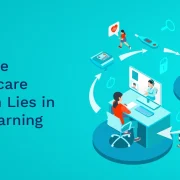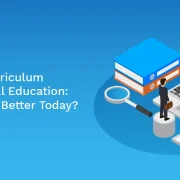
Elevating Virtual Education: Managing Video Lecture Challenges in Higher Ed
As the world continues to grapple with the COVID-19 pandemic, educational institutes have been forced to adopt different methods of teaching and instruction to accommodate for distance learning.
One of the key characteristics of distance learning is the use of video lectures instead of traditional physical instruction, and this brings with it a unique set of challenges.
Although largely common to all levels of education, the advanced nature of higher education study amplifies some of these video lecture challenges and makes them a lot harder to address.
Table of Contents:
- Embracing the Benefits of Video Lectures
- The 4 Main Video Lecture Challenges in Higher Education
1. Video Lecture Recording and Storage
2. Ensuring Accessibility
3. Locating Information Within Video Lectures
4. Tracking Student Progress - Conclusion: Can Higher Ed Institutions Overcome These Challenges?
Embracing the Benefits of Video Lectures
A video lecture is a lesson or lecture that is pre-recorded and then distributed among students via online mediums such as virtual classrooms. This is often used as a replacement for physical classroom lectures where students’ and teachers’ in-person attendance is required to facilitate learning.
Video lectures offer a wide range of benefits to professors and students alike. Professors are given the opportunity to record their lectures in front of a camera in a relatively stress-free environment of their choice without any untoward distractions. Students, too, enjoy flexibility in terms of being able to choose when and where they want to attend a video lecture.
It allows them to indulge in self-study and learn at their own pace, which is crucial for the efficient absorption of concepts.
However, the downsides are aplenty too. Professors find it significantly harder to clear doubts without the presence of real-time interaction and keep track of student performance and understanding. Video lectures make online classes more interactive.
Read on to know more about the various video lecture challenges higher education institutions face.
The Four Main Video Lecture Challenges in Higher Education
1. Video Lecture Recording and Storage
With the easy availability of modern, high-quality cameras in almost all devices available to consumers today, be it mobile phones, laptops, or tablets, recording a video lecture with acceptable audio and video quality is not a daunting task.
However, directors, deans, and various other stakeholders in institutions often struggle with ensuring that videos are recorded and stored in a format that will play on the different devices of professors as well as students. There are multiple video formats such as MP4, MOV, 3GP, AVI, etc. Therefore, all video lectures must be encoded in a single, universal format that will ensure ease of access.
Apart from format challenges, the storage of these videos may prove to be an expensive and time-consuming affair. Each high-quality video lecture of approximately an hour could take over 2GB of space, which adds up over time with each lecture.
This large volume of video lectures needs to be stored on a virtual platform that students can access at all times, which leads to the next significant challenge.
2. Ensuring Accessibility
Video lectures must be available to all students and professors at all times of the day to truly achieve the intended purpose of virtual distance learning. This means that colleges and universities must necessarily make arrangements for each video lecture to be uploaded and easily accessible to students.
This requires strong, high-speed internet facilities and a virtual learning platform capable of hosting lengthy lectures online without restrictive file size limits.
Additionally, videos that are too large in size may cause problems since, despite high levels of internet proliferation in the Middle East and North America, not all students may have access to the high-speed internet facilities needed to promptly download and access such a file.
Therefore, the responsibility falls on the institutions to ensure that the video lectures are of optimal quality and compressed to reasonable sizes to accommodate for network accessibility challenges that students may face.
3. Locating Information Within Video Lectures
Video lectures usually range from 45 to 90 minutes on average and are basically chunks of information that students must refer to in order to learn and understand the course material.
One of the biggest challenges of video lectures is that it is very difficult for a person to access information within a video as and when required. For example, if a student wishes to refer to the part of a video lecture on climate change that specifically deals with The Paris Agreement, 2015, significant time is wasted in seeking out the exact part of the video.
This challenge may be addressed by adding tags or time-stamps to the information within the video, but this too is an extremely time-consuming process.
You might also like to read: Top 10 Online Education Resources for Students and Educators
4. Tracking Student Progress
One of the benefits of video lectures is that it allows students to learn at their own pace at any time and place of their choosing. But this also poses a challenge for higher education institutions since professors are unable to ascertain student progress and learning primarily due to the lack of real-time interaction.
Doubt-solving is a key aspect of student progress, and since professors may not always be available when a student is attending a video lecture, many doubts may remain unasked or unsolved. This hinders the ability of professors to gauge student progress. One-on-one interactions also help professors understand which parts of the syllabus are tricky and how teaching and instruction may be improved for student benefit.
Stakeholders at all levels of the institution, from the heads of management such as directors and deans to the investors and parents of students, are all certain to benefit from a clearer understanding of student progress.
Conclusion: Can Higher Ed Institutions Overcome These Challenges?
It is difficult for any institution to truly shift to a learning pattern or method that is immune to the sudden change in these uncertain times. Virtual learning is a necessary tool that higher education institutions, in particular, may need to employ from time to time to ensure that students continue to learn and grow despite the prevailing circumstances around them.
Where there is a necessity, there is often innovation, and this is also the case in the field of virtual learning. A number of e-learning suites have been developed in recent times that offer educational institutes an all-in-one solution to all the problems discussed above and more.
Today’s intuitive platforms allow professors to record and upload lectures, conduct parallel quizzes and evaluations, answer student queries, gather student feedback, etc., all under one virtual roof. In the coming years, it would not be surprising if more and more higher education institutions opt to utilize these tools and platforms to facilitate more seamless and uninterrupted learning.
Hurix provides education institutes with a range of unique higher education solutions to help them meet video lecture challenges and e-learning requirements with ease.
From online learning management to content creation and seamless delivery, Hurix offers an all-in-one solution to all challenges discussed in this article.

Senior Vice President – Business Development
at Hurix Digital, with over 25 years of experience in EdTech and workforce learning. He excels in business development, customer relationship management, and scaling digital learning solutions, driving global growth through innovative content, simulations, and AI‑driven training offerings




